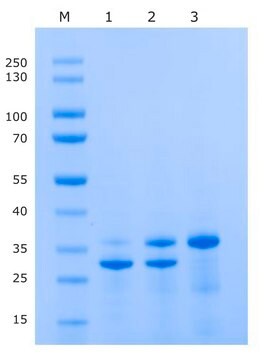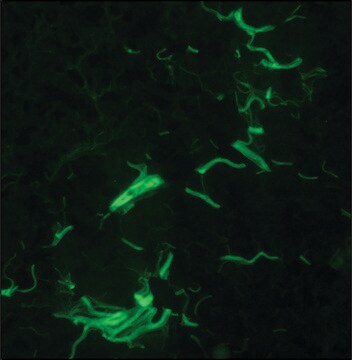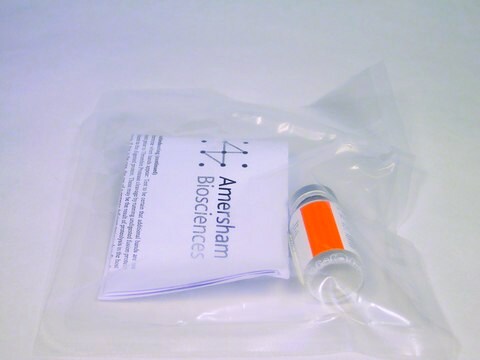SAE0067
SUMO Protease
His tagged recombinant protein, lyophilized powder
Synonyme(s) :
Small Ubiquitin-like Modifier Protease, ULP, Ubiquitin like protease, Ubiquitin-homology domain protein PIC1, Ubl-specific protease 1
About This Item
Produits recommandés
Produit recombinant
expressed in E. coli
Niveau de qualité
Pureté
≥95% (SDS-PAGE)
Forme
lyophilized powder
Poids mol.
27 kDa
Conditions d'expédition
ambient
Température de stockage
−20°C
Description générale
SUMO protease is active over a wide range of temperatures (2–30 °C), ionic strengths (0–400 mM NaCl), and pH ranges (6–8.5). However, its activity may vary depending on the substrate and conditions. Researchers will need to optimize their specific reaction conditions. As an initial suggestion, 20 units of SUMO protease can be used per mg of target protein for 1 hour at 30 °C, or overnight at 2–8 °C. The cleavage efficiency can then be estimated by SDS-PAGE. If necessary, the amount of SUMO protease can then be adjusted. SUMO protease works better in the presence of reducing agents, e.g., 0.5–2 mM DTT. DTT in the reaction mixture can significantly enhance cleavage efficiency, especially during longer incubations
Store the reconstituted product at –20 °C. It is recommended to reconstitute the enzyme in 100 μL of either water or 50% glycerol (v/v), supplemented with 1 mM DTT. Solutions in water/DTT should be stored in frozen aliquots to avoid freeze-thaw cycles, which can adversely affect the protease activity.
Définition de l'unité
Code de la classe de stockage
11 - Combustible Solids
Classe de danger pour l'eau (WGK)
WGK 2
Point d'éclair (°F)
Not applicable
Point d'éclair (°C)
Not applicable
Certificats d'analyse (COA)
Recherchez un Certificats d'analyse (COA) en saisissant le numéro de lot du produit. Les numéros de lot figurent sur l'étiquette du produit après les mots "Lot" ou "Batch".
Déjà en possession de ce produit ?
Retrouvez la documentation relative aux produits que vous avez récemment achetés dans la Bibliothèque de documents.
Les clients ont également consulté
Articles
Proteases for biotinylated tag removal for protein purification workflows with related reagents and technical resources.
Notre équipe de scientifiques dispose d'une expérience dans tous les secteurs de la recherche, notamment en sciences de la vie, science des matériaux, synthèse chimique, chromatographie, analyse et dans de nombreux autres domaines..
Contacter notre Service technique









